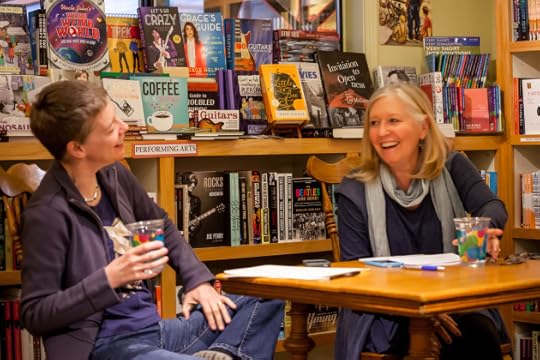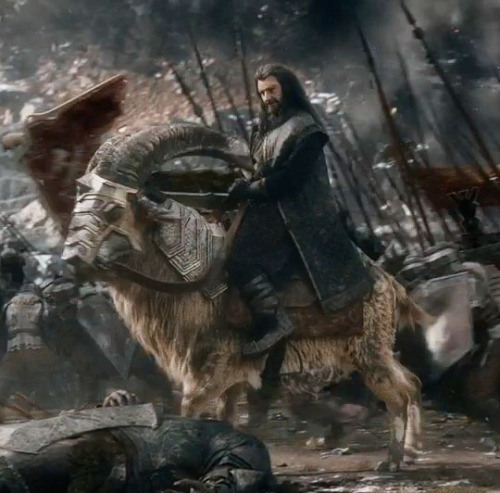Nicola Griffith's Blog, page 75
April 17, 2015
Bits and bobs of news

Topeka Library made a video that’s gone viral. Check it out. Look for a certain novel you might recognise. (Bonus points for those who see it more than once. ETA: list of all the books shown.)
Pope Francis has called off the investigation into American nuns. I don’t have a lot of info right now—all parties have agreed to 30 days media silence on the matter—but it sounds pretty much like a win for the nuns. More when I have it. Because you know this issue interests me.
Mark your calendars: Thursday, May 21st, 4:00-6:30 pm, our friend, Riva Lehrer, the artist who made that fabulous portrait of me, will be giving a presentation on Disability Arts and Culture. Kane 225 (Walker-Ames Room) at the University of Washington. More on that later, too.
Soon there might be NEWS about Kelley’s novel Solitaire . Stay tuned.








April 15, 2015
The opening of Menewood? Tomorrow!
Tomorrow (Thursday) at Queen Anne Book Company with Patricia Bracewell, author of The Price of Blood and Shadow on the Crown, I might read the opening of Menewood. I haven’t decided.
Show up and see…








April 12, 2015
Yesterday morning was beautiful
My morning looked like this:
And sounded like this (about 12 sec):
https://nicolagriffith.files.wordpress.com/2015/04/birds.mp3
Have a great Sunday.








April 11, 2015
Getting Medieval!
To celebrate Game of Thrones: Season 5, the fabulous radio wizards at To the Best of Our Knowledge are running “Getting Medieval (Update)” in which me and Kelly DeVries, Bruce Holsinger, Aubrey Ralph, George RR Martin, Nick Bantock, and John Stauffer talk about everything from battle axes to belief.
You can listen to just my 12-min segment, sure, but then you’d be missing out on some good stuff. And books. (I can recommend Bruce Holsinger’s A Burnable Book: Chaucer and Gower and death and poetry. Go read it.) So get the whole 52-min show and learn how heavy that armour really was and what’s behind the popularity of historical fantasy. You know you want it!








April 9, 2015
Touching Fire video
I was futzing about on organising my YouTube channel the other day and came across “Sun on Dragonfly,” a mashup video (about 4 minutes). It was made a while ago by a reader, the fabulous luthier @KrakenMaiden, in response to a reading I did of “Touching Fire.” I was struck anew by the editing so thought I’d share.*
Part of it, right at the beginning, might be a wee bit NSFW.
Completists can read the whole story in With Her Body.
If you’d rather listen to the reading on its own, here you go (about 11 minutes):
https://nicolagriffith.files.wordpress.com/2015/03/fire.mp3
* In organising this new site I’m stumbling across all sorts of things I haven’t seen in an age. Given that I’m also hard at work on Hild II and not inclined to get stuck into the new, I might be revisiting old stuff for a while…
…but I haven’t forgotten my plan to post a series of Women in the Arts pieces soonish. So stay tuned.

April 8, 2015
Thursday 16th April, 7 pm: Queen Anne Book Company
On Thursday, 16th April at 7 pm, I’m doing an event at Queen Anne Book Company with Patricia Bracewell, author of The Price of Blood and Shadow on the Crown, novels about Emma of Normandy. Emma lived in the eleventh century, four hundred years later than Hild, but as writers we had to deal with some surprisingly similar problems.
Among other things we’ll be talking about:
Why and how a Yorkshire lass and a Californian are teaming up to talk about women who lived in Europe more than a thousand years ago
Why Emma and Hild fascinate us
The challenges and joys of writing about women with agency from so long ago
We’ll also both do short (very short—less than 2 minutes each) readings*, and then open it up to the audience.
It should be a far-ranging evening in one of Seattle’s most delicious bookshops. It would be lovely to see you there.
* I’ll be reading something you haven’t heard before…

April 7, 2015
Manly war goats
Easter is for chocolate and whack-off-their-heads-with-a-sword screen time; on Sunday we watched the third installment of Peter Jackson’s The Hobbit: The Battle of the Five Armies. Here are my thoughts. Admittedly, there was beer…
I’m a fan of Lord of the Rings, book and film. Neither is perfect, but each, in its own way, is a magisterial achievement*. I’m not a fan, though, of The Hobbit, book or film. As a child, the book didn’t work because I didn’t understand the existential panic of a staid homeowner faced with the choice of adventure or safety, and as an adult I find it thin and unsatisfying. The book, at least, is coherent. The films are not.
The first two installments are by turns turgid and silly—with some set pieces designed, I’m sure, purely for the theme park rides that will follow. They bored me a little; I was a bit bored by the book, too, so that was no surprise. I was content with the good acting, the fabulous set design, and the comfortingly predictable story. But Five Armies is not pleasant in any way. The third part of the film story has irritated me to a degree that comes close to disgust and with it Jackson has come dangerously close to dismantling the entire franchise and his own achievement.
The main problem with Five Armies is easy to identify: it has no centre of gravity, no sun around which it turns. Bilbo shone steadily at the heart of the book. This third film feels more like a vast but empty corner of the cosmos streaked with oddly-shaped bodies. Some do come around again, and some burn briefly and fiercely—Thorin, Bilbo, Bard, Kili, Azog, Smaug—but their orbits are eccentric and unpredictable. Even poor old Legolas whizzes by a couple of times, careening crazily off random objects. The entirely invented character, Tauriel, also floats through but her composition is mystifying. She is a babe. Kick-ass babe, love-struck babe, babe in peril—but always a babe, following no trajectory but the writers’ convenience.
Tauriel is also the only character whose danger is overtly sexualised. I’ll come back to that.
I forget what the orc who licked his lips at Tauriel looked like, but I have a very clear picture of the monsters in the top echelon: pale, bald, clean-shaven and male. This phenotype has become a noticeable tic of Jackson’s—even more so when we fold in the spear-carrying monsters, who are also overweight and close to naked. One reason I can’t watch Guillermo del Toro movies is that the monsters spun from his psyche are so clearly personal and particular, with the same physical characteristics in each film, that it feels intrusive to watch. Or perhaps he’s just lazy: he’s found a type, and sticks with it. I see that del Toro is one of the writers on these films. It’s not my place to speculate on whether these monsters are laziness or obsession on anyone’s part, but I will say that the typing strikes me as simplistic. Take the Good Guys (and there are all, except Tauriel, guys) transport animals. They’ll all food animals: rabbits, moose, pigs, goats (more on which momentarily). These useful (mostly herbivorous) mammals are balanced against traditionally pestilential and/or verminous (most carnivorous) beasts used as tools of the Bad Guys (ditto): bats, worms (beamed in from Dune), and wolves. In a class of their own, are the eagles. Who save the day. Again. (It’s becoming harder to ignore the little voice that asks, Why don’t the eagles save everyone the trouble by carrying the heroes to their destination in the first place?)
While we’re on the subject of flying things, let’s talk about the dragon. Smaug was fab—and Benedict Cumberbatch’s voice carries me past the most egregious idiocies—until the end. At which point he became a Chatty Cathy, a boastful Bond villain, bloviating while making a beeline for Bard, a nice, undeviating arc, making a perfect target. Most convenient. Though not as convenient as the empty war goats that gallop up to Thorin and co when they need to scramble up a mountain. Nothing can redeem the ridiculousness of manly war goats. Nothing. I burst out laughing and couldn’t stop for five minutes. (This was the only really funny part of the film; I’m pretty sure it wasn’t meant to be.) Those war goats were even sillier than Legolas paragliding from a giant bat and using a dagger through its brain as a stop-rope. That casual killing didn’t make me laugh, though, because by this time I was thoroughly sick of the mean-spirited and offhand slaughter of animals, dumb and otherwise.
What brought me closest to anger—at this point I cared so little it was hard to work up any steam—was the muddled gender politics.
Tauriel I’ve already mentioned. I could say a lot more but why belabour the point? Then there was Alfrid. Alfrid is, essentially, a mix of cut-rate Wormtongue and pantomime dame. There are no nuances. Alfrid is purely bad. And we know this because he dresses up as a woman. Badly. This easy equation of cross-dressing to evil, and, more specifically, the incompetent cross-dressing as female signifying evil, is lazy. It’s unnecessary. It’s harmful. Like the sexualisation of Tauriel’s peril, it serves to reinforce current prejudices. This kind of crap has no place in a 21st century film. And I haven’t even talked about Galadriel’s cameo, the power-turns-me-aubergine-and-then-I-faint moment because I haven’t the heart.
The whole film felt wrongly focused and badly paced. I felt for good actors thrown under the bad-story bus. Thranduil/Lee Pace was just right as the icy elf king but much less believable when suddenly caught in a thaw. Thorin/Richard Armitage had to be Macbeth one minute, Othello the next, Hamlet in between, and Errol Flynn the rest of the time. The old stalwarts did a steady, professional job throughout; I admire the work, but they did not seem to be having fun and I suspect they earned every penny. I particularly felt for Legolas/Orlando Bloom—forced to be frantically, impossibly ever-more nimble on the always-imploding bridges—and who, Merlin-like, obviously ages backwards, getting younger, slimmer, and less grim as time passes.
Some of the set pieces are pretty good—the fall of Smaug from the sky, Thorin’s fight on the ice—but in the end, they felt perfunctory. That moment when the elves leap over the dwarf shieldwall? In another film, Jackson would have set that up well enough to trigger a heart-stopping rush, a shout of delight. Here, I just thought, Eh. I didn’t care. It didn’t matter. And the bit with Legolas at the end, what should have helped set up the springboard ending flinging us into the magnificent Lord of the Rings, is, instead, a weak retcon that threatens to cheapen the entire franchise.
I won’t be watching these Hobbit films again. This review is my way of rinsing the whole experience from my brain, trying to forget it so I can, one day, bear to see Lord of the Rings again. The book, thankfully, remains untouched.
* Brief review of both: A chapter in the history of a world that never was but should have been. As we travel with hobbits and dwarves we taste elven bread and good honest beer, smell the fumes of Orodruin and the existential rot of the marshes of Mordor. The book is stuffed with satisfactions: hobbit delight in a good snug hole in a sandy bank, dwarfish appreciation of a beautiful cavern, the soul-stirring gallop of the perfect horse. The film adaptation was enormous fun—at times even moving—but it lacked understanding of the Anglo-Saxon burdens of noblesse oblige and elegy which lie at the book’s heart. (I will be forever grateful, though, that it left out Tom Bombadil. I just wish it had cut some of those endless ents.) Journeying with Tolkien in print is stunning; when we get to the end and come back, home looks different.

April 5, 2015
Why I prefer chocolate bunnies to chocolate eggs
It’s been a very quiet human-noise day: no construction, no chainsaws, lovely. And the sun shone, even better. Sadly, though, the birds have felt emboldened. Perhaps they think, what with all the eggs around, painted and chocolate, that some people in this neighbourhood are celebrating all feathered kind and wingèd ones can do no earthly wrong.
First of all, we had a woodpecker bashing his (oh, yep, definitely male) brains out against our chimney. The chimney, when drilled on, makes the whole house resonate like a drum. It’s unnaturally loud. The woodpecker (a flicker) thought that was The. Best. Thing. Eva! And just got more and more enthusiastic, an absolute frenzy of sound, like a drummer on meth. He kept going until another woodpecker in the ravine got competitive. They had a hammer-off. This unholy racket annoyed the robins, who all started yelling at each other. Robins can sound most aggrieved. And piercing. (Robins have always pissed me off: apart from anything, they look so stupid.) The robin racket irritated the jays. Let me tell you, when Steller’s Jays get going, they are loud. So loud in fact, that they woke up an owl, who hooted softly, mournfully—threateningly—until the lesser birds shut up.
And you thought being surrounded by trees was peaceful…

April 3, 2015
Daffodil means spring
Tomorrow would have been my mother’s birthday. She loved spring. Her favourite flowers were daffodils. When I put daffodils on the table, I think of her.

March 31, 2015
Hild’s eye salve kills MRSA
This is a repost from my research blog, Gemæcce.
Both the BBC and Archaeology (and then lots of others, such as the New Scientist) picked up the story from the University of Nottingham about the so-called miracle eye salve in Bald’s Leechbook, an Old English book of remedies written, some believe, in the ninth century. The researchers at Nottingham were amazed at the efficacy of the salve, which uses two species of Allium (garlic and onion or leek), wine and ox-gall (bile from a cow’s stomach), made in a brass vessel, strained, and left to cool for nine days before use.
They tested it in vitro and then topically on wounds in vivo on scraps of skin taken from mice infected with Methicillin-resistant Staphylococcus aureus (MRSA). It worked, killing 90% of bacteria—about the same as the antibiotic vancomycin. The researchers were “blown away” and “genuinely astonished.” The key, apparently, is the nine days’ steep, which turns the mix into “a kind of loathsome, odorous slime.”
Both Hild and Breguswith could have told them it worked. From page 161 of the US edition of Hild*:
Hild and her mother worked side by side in the still room. They stood hip to hip and shoulder to shoulder: Hild was now as tall as Breguswith. While her mother rinsed an ox horn with hot vinegar, Hild strained the onion and garlic mash, steeped in a copper bowl for nine days with wine and bull’s gall, through a fine cloth. When the liquid was clear, Hild poured it carefully into the clean horn. Breguswith pushed in the wooden stopper and Hild warmed beeswax to seal it. In winter, when eyelids were red and angry, they’d dip a feather into the mixture and use it to paint a line along the eyelash roots to treat styes. Eye infections were always worse in winter when everyone crowded together and the fires smoked.
This kind of remedy doesn’t happen by accident. It’s the end result of a long process of treatment, observation, and adjustment. It drives me nuts when people talk as though Anglo-Saxons were superstitious fools. Yes, no doubt some of them were. But some, clearly, were clever and careful people. As one of the readers who pointed this news out to me said (thanks, Terry!), Breguswith knew a thing or two…
* page 159 in the UK edition










